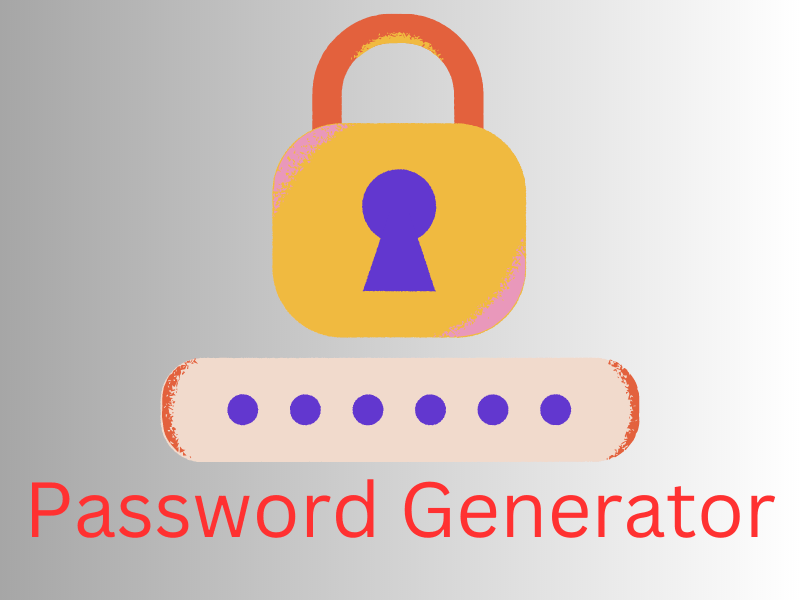
Free Online GUID Generator
GUID Generator
Online Guid Generator
An online GUID generator, often referred to as a “GUID generator” is a convenient and efficient tool that allows users to generate Globally Unique Identifiers (GUIDs) effortlessly. These unique identifiers are essential for various applications, especially in software development and database management. GUIDs are 128-bit hexadecimal codes that guarantee the uniqueness and non-replicability of data elements across different systems and databases.
The “GUID Generator Online” offers a user-friendly interface, making it easy for users to obtain globally unique and random alphanumeric codes with a few simple clicks. This tool is valuable for developers, database administrators, and anyone requiring unique identifiers in their projects.
By using the focus key phrases “online GUID generator,” “GUID generator online,” and “GUID generator,” this tool ensures visibility and accessibility for users seeking to generate GUIDs. Whether you need to create unique identifiers for software components, database records, or any other purpose, this online generator streamlines the process and eliminates the risk of data duplication.
Guid Generator Online
With the ever-expanding digital landscape and the need for scalable and distributed systems, GUIDs have become an indispensable component in data management and integration. Unlike traditional sequential numbering or random ID generation methods, GUIDs are designed to be universally unique and are highly unlikely to collide or overlap, even when generated simultaneously across multiple systems.
The benefits of using a GUID generator are not limited to uniqueness alone. GUIDs also contribute to data security, privacy, and referential integrity. These unique identifiers ensure that each data element can be identified with certainty, making them ideal for use in distributed databases, data replication, and synchronization processes.
In the context of software development, GUIDs play a significant role in creating unique identifiers for components, interfaces, and libraries. They facilitate proper versioning and avoid naming conflicts, especially in collaborative and large-scale development projects.
A Beginner’s Guide to Code Generation for REST APIs:
When building RESTful APIs, code generation can be a valuable technique to expedite the development process and ensure consistency. This beginner’s guide will walk you through the fundamentals of code generation for REST APIs, providing step-by-step instructions and best practices. You will learn how to set up code generation tools, generate API endpoints, data models, and client libraries automatically, and integrate them seamlessly into your project. By the end of this guide, you’ll be well-equipped to harness the power of code generation and boost your productivity in developing robust and scalable RESTful APIs.
What is GUID?
A GUID (Globally Unique Identifier) is a 128-bit value used to uniquely identify objects or entities in computer systems.
How GUID is unique?
A GUID (Globally Unique Identifier) is designed to have an extremely low probability of generating two identical identifiers, making it highly unique.
How GUID is Generated:
GUID, short for “Globally Unique Identifier,” is a 128-bit unique identifier used in various computing systems. It is also known as UUID (Universally Unique Identifier). The process of generating a GUID involves the following:
- Randomness: The majority of GUIDs are generated using pseudo-random or random number generators. This ensures a high probability of uniqueness, although it cannot guarantee absolute uniqueness due to the limited number of bits.
- MAC Address and Timestamp: In some cases, the MAC address of the network adapter and the current timestamp are used to generate a GUID. This combination helps enhance the uniqueness of the identifier.
- Cryptographic Hash Functions: Cryptographic hash functions, such as SHA-1 or SHA-256, can also be employed to generate GUIDs. By hashing unique data (e.g., a combination of system information and random numbers), a unique identifier is produced.
- Combining Multiple Values: GUIDs can be generated by combining various factors, such as system information, timestamp, and random values. This results in a unique identifier that is highly improbable to clash with others.
It’s important to note that while GUIDs are designed to be highly unique, collisions (two identical GUIDs) can still occur in practice due to the vast number of possible combinations. However, the probability of such collisions is extremely low, making GUIDs a reliable choice for creating unique identifiers in various applications and systems.
FAQ’s
What is a UUID generator?
A UUID generator is a tool or algorithm that generates Universally Unique Identifiers (UUIDs), which are 128-bit unique identifiers used to identify objects in a distributed computing environment.
What is the difference between GUID and UUID?
GUID (Globally Unique Identifier) is a Microsoft implementation of UUID (Universally Unique Identifier). Both are used for the same purpose of generating unique identifiers but are named differently in different contexts.
What is the format of a GUID?
A GUID is typically represented as a 32-character hexadecimal number, grouped in five parts separated by hyphens, for example, “123e4567-e89b-12d3-a456-426655440000”.
How long is a GUID?
A GUID is 128 bits long, equivalent to 16 bytes or 32 hexadecimal characters when represented as a string.
Can you provide an example of a GUID?
Sure! An example of a GUID is “f47ac10b-58cc-4372-a567-0e02b2c3d479”.
How can I generate a new GUID in C#?
To generate a new GUID in C#, you can use the Guid.NewGuid() method, which creates a new random GUID each time it is called.
What is Guid Generator Online?
Guid Generator Online is a web-based tool that allows users to generate GUIDs conveniently through their web browsers without writing code.
How can I generate a UUID in JavaScript?
To generate a UUID in JavaScript, you can use external libraries like uuid or uuidv4, which provide functions for UUID generation.
What is UUIDv4?
UUIDv4 is one of the variants of UUIDs defined by RFC 4122, and it generates UUIDs using random or pseudo-random numbers, ensuring a high probability of uniqueness.
What is the difference between UUID and CUID?
UUID (Universally Unique Identifier) and CUID (Collision-resistant Unique Identifier) are both methods of generating unique identifiers. However, CUIDs are designed to be shorter and collision-resistant, while UUIDs focus on global uniqueness.
Can I generate a short GUID?
Yes, there are techniques to generate short GUIDs, also known as “sequential GUIDs” or “Comb GUIDs,” which use a combination of timestamp and random values to create shorter identifiers.
How do I generate a GUID in Python?
In Python, you can use the uuid module to generate GUIDs using the uuid.uuid4() function.
What is the purpose of using UUIDs in distributed systems?
UUIDs are used in distributed systems to provide a means of generating globally unique identifiers that can be used across different systems and prevent collision of identifiers.
Can two GUIDs be identical or the same?
The probability of two GUIDs being identical is extremely low due to the large number of possible combinations, making collisions highly improbable. However, it is not impossible.
Are UUIDs suitable for use as primary keys in databases?
Yes, UUIDs are commonly used as primary keys in distributed databases as they ensure unique identifiers even when data is distributed across multiple nodes. However, they may require more storage compared to integer based keys.
More Free Tools which you may want to use :
Read our most popular articles :
- How Does 5g Technology Enhance the Internet of Things : Unleashing the Power of Things
- How to Activate 5g in Jio Unlimited Data: Exploring Jio 5G Options!
- How to Enable 5g Unlimited Data in Airtel, Supercharge Your Phone with Airtel’s 5G!
- How Can I Activate 5g Instead of Lte, Want Lightning Speed 5G ?
- How Do I Activate 5g on My Iphone 13, Activating 5G on Your iPhone 13
- How to Activate 5g Airtel Unlimited Data, Activating Airtel Unlimited 5G Data (Simple Guide)
- How to Activate 5g Home Internet Verizon, Power Up Your Home with Verizon 5G Home Internet: Activation Guide
- How to Activate 5g Network in 5g Mobile, Activating 5G on Your Phone
- How to Activate 5g Unlimited Data in Airtel Thanks App, Activating Airtel’s Unlimited 5G with the Thanks App!
- How to Activate 5g Welcome Offer in Jio, Tapping into Jio’s 5G Speed: A Guide to the Welcome Offer
- How to Activate Airtel 5g in Airtel Thanks App, Activating Airtel 5G with the Airtel Thanks App!
- How to Activate Airtel 5g Unlimited Data on Iphone, Supercharge Your iPhone with Airtel 5G (if it’s available in your area)!



















